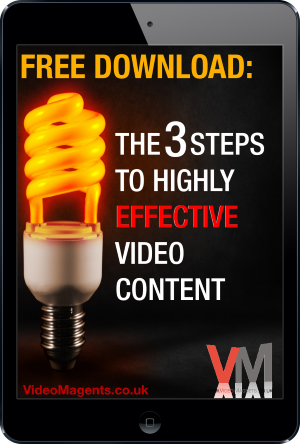
Is optimising videos rocket science?
It isn’t (phew, what a relief) but judging by how few people get it right on YouTube and elsewhere, you might as well think it was a lot more difficult than that.
Let’s delve into the mysteries of Optimising our Video Magnets.
Video optimisation generally takes us to optimising our videos for Video SEO, for Speed, that is for file size, and for video Content.
Here, I won’t go into detail about optimising your video content. I have already created at least 10 separate videos in this ‘A to Z of Video for Professional Services’ dealing with various aspects that will help you create the right kind of content: Purpose, Structure, Call to Action, WIIFM, Content itself, of course, and a few more. (If you’re looking for a shortcut to help with video content, just follow the link at the top of the sidebar or click here.)
Optimising Video for Speed means the speed of STREAMING our videos. We achieve this by reducing the file size of our videos as much as possible without affecting video quality.
At a later stage, I’ll create a separate video showing you how you can achieve this easily without any technical knowledge by using a free video compression programme. Meanwhile, just follow this link to Handbrake.
This, then, leaves us with…
Optimising Video for Video SEO.
 This is at the centre of video marketing. By video marketing, we typically understand optimising our videos for YouTube to help them rank on both YouTube and Google.
This is at the centre of video marketing. By video marketing, we typically understand optimising our videos for YouTube to help them rank on both YouTube and Google.
There are two roads that can be travelled here.
One is that taken by YOUTUBERS, who typically are millennials who create videos to make money from advertising shown on or in their videos.
In case you are interested, a rule of thumb for this is roughly $1,000 earned per million views. GangNam Style with its two and a half billion or so views didn’t do badly. But how many videos actually do get a million views?
However cool this may look, we won’t take this road.
Why?
Because the purpose for our videos is totally different to that of the YouTubers. While YouTubers create videos for YouTube to earn money through advertising, we upload our videos to YouTube for Information or Content Marketing.
What do I mean by this?
We create and publish our videos not to earn money from our videos but to promote our services, to increase our visibility, to show our potential clients what we can do for them. This will help us earn our money through the services we provide to our clients.
YouTube is just a platform, albeit the most important platform for video marketing at this moment in time. That is why we have to optimise our videos for it, which is a step most people, regrettably, tend to ignore.
6 Steps to Successful YouTube Optimisation
Here are the 6 steps you have to follow if you want to get your videos into optimal shape for YouTube.
Start by taking your main keyword.
[1] This keyword has to go into the filename of your video file before you upload it to YouTube.
[2] Then you use the keyword, your company name plus, if possible, a contact telephone number in your video title on YouTube.
Next comes the video description.
[3] The description should start with a clickable link to the page on your website where your video lives or, at the very least, to the homepage of your website.
This is followed by an abbreviated version of the content of your video.
If you have social media properties such as Facebook pages, a Twitter account or a LinkedIn profile, add clickable links to them at the end of the description.
[4] Once you have completed the description, add tags to your video. Tags are any kind of keyword that is relevant to the content of your video.
Now, start uploading your video to YouTube. While you are waiting add the next ingredient:
[5] A customised thumbnail that is easily readable and attractively designed.
Don’t rely on the video thumbnails automatically generated by YouTube. They are just randomly selected images (frames) from the beginning, middle and end of your video and won’t do anything to enhance its appeal.
[6] Finally, after your video has been uploaded to and processed by YouTube, add a transcript.
This will help promote your video in a number of ways: not only will it make your video accessible to the hard of hearing, it will also tell the search engines what your video is about. And it beats hands down the closed captions that YouTube creates automatically.
Now, that everything is in place and your video is properly optimised for Video SEO, don’t forget to make your video public. Don’t leave it unlisted or private.
You want it to be found, don’t you?
Do you have any further questions? Would you like me to cover specific topics in future videos? Do you wish to be notified when the next video in this series will be published? I’ll be delighted to answer all these questions and will reply as quickly as possible. Just use the form below to get in touch.

Your information will not be shared with anyone.

Comments on this entry are closed.